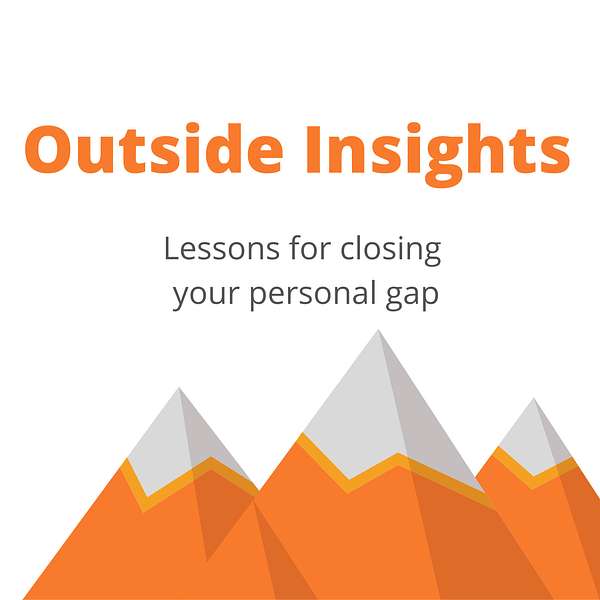
Outside Insights
Outside Insights with Chris Burkhard is a podcast for people who want more — more clarity, more purpose, more impact.
Hosted by entrepreneur and lifelong learner Chris Burkhard, the show explores how bold leaders, builders, and thinkers close the gap between the life they have and the life they want. Through honest conversations and powerful stories, we unpack the lessons that shape real lives and careers.
If you're looking for ideas that challenge you, motivate you, and help you grow — you’re in the right place.
🎙️ New episodes drop every other week.
🌐 Listen at myplacers.com/outside-insights
📩 Follow for fresh insights that meet you where you are — and push you further.
Outside Insights
Closing Your Gaps With See, Think, Act
Let’s face it: life is a series of decisions. From something as simple as what we eat for breakfast to major career moves, we make thousands of choices each day (between 33,000–35,000!). Some are automatic, handled by our subconscious to keep us sane, while others require careful consideration and come with their fair share of anxiety. Reflecting on our decisions — big and small — can reveal patterns that shape our lives. Perhaps it’s patterns of overspending on impulse buys, avoiding crucial conversations or choosing the path of least resistance. If these patterns sound familiar to you, it’s time to go back to the basics and consider how we’re making decisions.
There are many decision-making models out there. Charlie Munger’s are a personal favorite of mine — you can learn more about them here. In fact, I mentioned his book in my last post on closing your gap through reading. Another favorite is the Almanack of Naval Ravikant. Each offers a toolkit to broaden our understanding and improve our choices.
See, Think, Act: My Decision-Making Model
Longtime readers will be familiar with See, Think, Act — a decision-making model that has been coined and passed down through generations of Burkhards.
It’s a simple yet effective approach to closing gaps by making better-informed choices. The key lies in gathering the right information (See) and thoroughly analyzing it (Think) before taking action (Act). It sounds straightforward, but in a fast-paced world where speed often trumps thoroughness, it’s easier said than done. Deadlines loom, pressures mount, and action often feels more urgent than reflection. In fact, at times it feels like the world wants us to be busy — more on that you can check out Slow Productivity by Cal Newport.
Yet, my experience tells me that slowing down to gather insights pays off in the long run. It’s about making fewer, better decisions rather than rushing into ones you may regret later. I challenge you to remember and use See, Think, Act when you’re faced with your next small or big decision.
Mastering See, Think, Act is like honing any skill — it takes practice. By adopting this approach, you empower yourself to navigate decisions with confidence and clarity. Whether in a tense staff meeting or facing a significant purchase decision, taking a moment to gather facts and consider implications can lead to more satisfying outcomes.
Remember, closing your gap isn’t an overnight feat. It’s a gradual process of learning, adapting, and improving. Next time you find yourself in a pivotal moment — at work, at home, or anywhere in between — try applying See, Think, Act.
Ask questions, seek more information, and after you’ve done that — trust your gut. Over time, you’ll find your decision-making and problem-solving skills sharpen, and you’ll move closer to the life you envision.
So, here’s to closing gaps, making informed choices, and embracing the journey ahead with confidence (most of the time).
Until next time, friends.
Chris